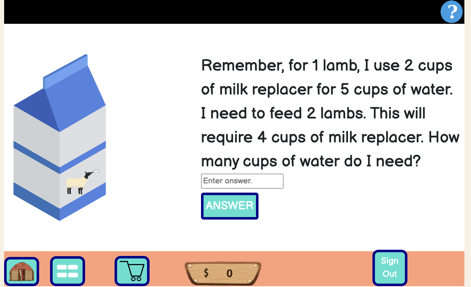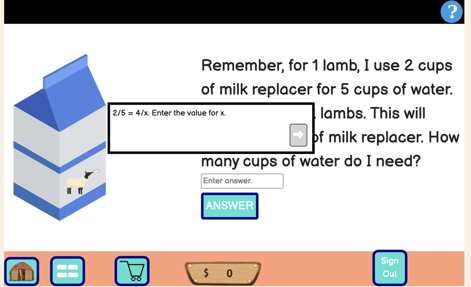Wow! So I just found out the Miller’s Analogies Test was discontinued. If you don’t know, it was at one time used for admission to graduate school and societies like Mensa where people sit around and feel smug about their IQ scores. It has questions like :
Intelligent : dunce :: _____ : clown
Oklahoma : Nebraska :: Oregon : _____
In remembrance, I thought I’d start this blog with an analogy. I’m often asked to speak to middle school students during the week that Los Angeles Unified School District has them studying careers. I get it, the district is 74% Latino/ Hispanic and we are all concerned about students’ achievement in STEM so what better person to bring in than a Latina with a Ph.D. specializing in Applied Statistics who co-founded a software company.
One day, a student raised his hand and asked me:
They say we’re going to be learning algebra next year. I keep hearing about algebra but I don’t know what that is. How is that different from the math we have been learning up until now?
– Very intelligent student in Los Angeles

I said, “The math you’ve been learning until now lets you add a single problem. If you learn 3 x 9 = 27 then you know how to solve that one problem. You’ll learn that division is multiplication in reverse, so you can check your answer by 27 ÷ 3 = 9. In algebra, you will learn how to solve TYPES of problems.
Let’s say that I’m buying two different things, maybe corn tortillas and flour tortillas, because what weirdo doesn’t like tortillas? If they cost the same, that’s one type of problem and I can represent it like this – p*(f + c) – where p = the price of a pack of tortillas, f = the number of packs of flour tortillas I want to buy and c = the number of packs of corn tortillas. Here is the cool thing – ANY TIME you have two different things that have the same price, you can solve the problem like that.
Now, let’s say you were looking at buying queso (cheese) and tortillas, because everyone likes quesadillas, right? Now, a pound of cheese doesn’t cost the same as a pack of tortillas. Let’s say I’m buying one pound of Cacique cheese for $4 a pound and I can make 20 quesadillas with that and tortillas cost $3 and come 10 to a pack.
So, the equation to compute the cost of 20 tortillas is $4 + $3 x (20/10). Here is the coolest thing – any time you have a problem where you have two things with different prices and you need different amounts, and one of the things is sold in a group or pack, you can use this equation to solve that problem.”
Did I use making tortillas to explain algebra? Yes, yes, I did. As my lovely daughter, Ronda, says, Don’t tell me how to live my life.
Of course, shortly after she said that, she ended up in the ring at Lucha Libre and one of my homies from back in the day was ready to fight security, but that’s a story from another day.
Anyway, my point, and I do have one, is that 7 Gen Blocks, the new low-code and no-code game builders we are working on is very much like that.
How exactly is 7 Gen Blocks: Coding like Arithmetic : Algebra ?
Oh, I am so glad you asked that! Why, it’s just like when I would be giving those presentations for a federal agency who will remain nameless that gave us 10 minutes to present and 5 minutes for questions when I planted friends in the audience who asked questions to elicit information I didn’t have time to get to in my presentation. Oh, wait, that never happened. That was a false rumor spread by my enemies, if I had any enemies, which I don’t, of course.
Anyway, to answer your question … an educational game may have a question like the one below, which was in our beta version of Making Camp Navajo. (You can now get the updated version – learn more and access the game) . We had a specific question asking the ratio of milk replacer to water when bottle feeding lambs. It will also have a specific hint that pops up when you click the question mark at the top of the screen.
When we make it into a block, not only can we insert a variety of numbers for the problem, say, any number between 2 and 20, but we can also make it possible for you to change the text, so instead of water to milk replacer to feed lambs, it can be water to cornmeal to make blue corn mush, or pounds of cheese to packages of tortillas. At the same time, the hint will be changed automatically, so, instead of showing “2/5 = 4/x Enter the value for x”, it will show the numbers you used in your problem.
So, we have moved from a specific problem in a game to a sort of “equation” where you plug in the values for problem text, numbers (or a range of numbers) and hint, and the new screens are automatically created for you. If you want an image, like my lovely carton of milk replacer, you can give the link to any image, too.
So, there you go 7 Gen Blocks: Coding :: Algebra: Arithmetic
Check out other major improvements to Making Camp Navajo. Or, just click the button below to go straight to play the game.



